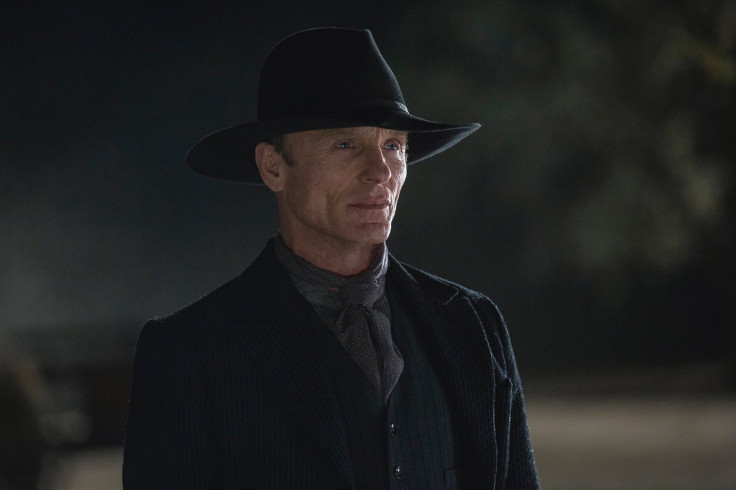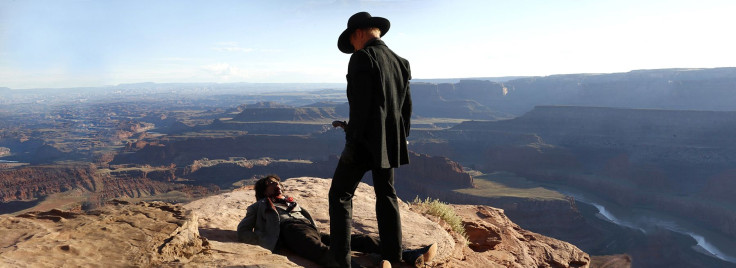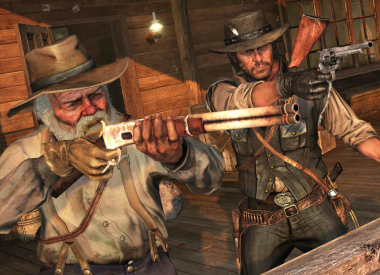Two episodes into Westworld and the mysteries surrounding the western-themed amusement park are multiplying. After an update the robots have accidentally (?) received a subconscious of sorts, reliving traumas that force a self-reflective, strange loop upon them that may or may not lead to consciousness, but will definitely tip the park into disorder. Westworld Creative Director Dr. Robert Ford (Anthony Hopkins) is unspooling something new, something to do with that black-spired chapel hidden in the desert. Memetic packages of information, like the reverie-triggering phrase “these violent delights have violent ends” (dredged up from robot Peter Abernathy’s dormant, past-life memories of “Romeo and Juliet”), are being passed around the park, their origins and significance more obscured, it seems, to us, the viewers, than the robotic hosts. Meanwhile, The Man in Black (Ed Harris) chases arcane clues deep into the park. Maybe there’s not much mystery in that one. Maybe The Man In Black is just a dedicated gamer.
While the Westworld premiere was largely drawn from the perspective of the robots and park operators, episode 2, “Chestnut,” introduced us to the park as beginning players see it. The train and first town are like a starting area in a video game. The main thoroughfare is lined with military leaders offering battle and other potential quest lines, like the old prospector that offered to lead William (Jimmi Simpson) to treasure. The further you travel out in the park, the more difficult it becomes.
So what happens when you’ve completed all the quests Westworld has to offer? How could the park continue to be entertaining after it’s been played out? Even massive games like The Witcher 3: Wild Hunt only contain a hundred hours or so of gameplay and The Man In Black has been coming to Westworld for 30 years. And Lee tossing out a new “Oydssey on Red River” every couple of months doesn’t seem like it would keep The Man in Black’s monstrous appetites sated.

So far we’ve been assuming The Man in Black is motivated by pursuits beyond the game, that the labyrinths and clues he’s found embedded inside small-time host characters point to something inside the architecture of Westworld. Westworld encourages you to believe that The Man in Black is playing a game outside the game, that he’s really targeting the creators and faces behind Westwold. But maybe his viciousness and drive lends his actions a gravity they might not deserve. The only time any human working for Westworld acknowledges him, he’s treated like a high-profile customer to be placated (“that gentleman gets whatever he wants”), not a threat. Is it really likely he’s sneaking this violent quest for Westworld’s secrets by the omnipresent park surveillance, that monitors and tailors every moment of gameplay?
Maybe instead The Main in Black is getting into the increasing levels of gameplay esotericism common to gamers in high-profile games. Look, for example, at the months it took Grand Theft Auto V players to uncover all the secrets behind Bigfoot and the ongoing collaboration to wring the mysteries from Mt. Chiliad. Or the superhuman efforts put into slivering away at the Super Mario Bros. speedrun record. Are scalp maps and a girl whispering cryptic clues about a blood arroyo and snake eggs really so different from GTA ’s golden peyote and sand glyphs?
Honestly, because Westworld seems so much about the larger mysteries surrounding the park and cataclysmic possibilities of computer consciousness it seems far more likely that The Man In Black’s actions are tied into something more than a particularly arcane quest line. Why the park creators would embed their deep corporate secrets under the scalps of their robots is a question that better have a good goddamn answer if Westworld isn’t to turn into a desert version of Lost. In the meantime, I’d prefer to believe that there is no ulterior motive behind The Man in Black’s quest. He’s just a hardcore gamer looking for obscure thrills.


















